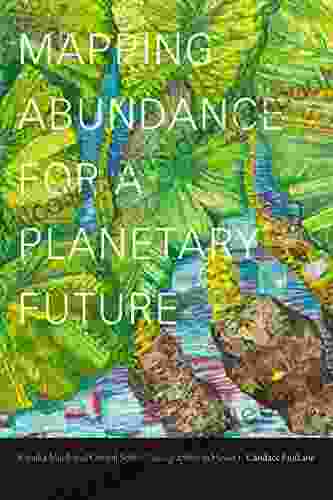Kanaka Maoli and Critical Settler Cartographies in Hawai'i: Decolonizing Maps and Reasserting Indigenous Sovereignty

Maps are powerful tools that have been used throughout history to shape our understanding of the world. They can be used to represent territory, to legitimize political claims, and to control resources. Maps have also played a significant role in the colonization of Indigenous lands, including the Hawaiian Islands.
4.9 out of 5
| Language | : | English |
| File size | : | 67069 KB |
| Text-to-Speech | : | Enabled |
| Screen Reader | : | Supported |
| Enhanced typesetting | : | Enabled |
| Print length | : | 292 pages |
| Paperback | : | 32 pages |
| Item Weight | : | 2.72 ounces |
| Dimensions | : | 6 x 0.08 x 9 inches |
In this article, we will explore the critical settler cartographies in Hawai'i, examining their impact on Kanaka Maoli (Native Hawaiian) sovereignty. We will analyze the ways in which maps have been used to legitimize settler colonialism and dispossess Indigenous peoples, and highlight the importance of decolonizing maps and reasserting Indigenous spatial knowledge.
Settler Colonialism and Cartography
Settler colonialism is a form of colonialism in which settlers from one country establish permanent settlements in another country, often displacing or subjugating the Indigenous population. Settler colonialism is characterized by the imposition of European political, economic, and social systems on Indigenous societies, and by the dispossession of Indigenous lands and resources.
Maps have played a central role in settler colonialism, serving to legitimize the claims of European settlers and to facilitate the dispossession of Indigenous peoples. Maps have been used to represent Indigenous lands as empty and available for settlement, and to justify the removal of Indigenous peoples from their traditional territories.
The Case of Hawai'i
The history of Hawai'i provides a clear example of how maps have been used to support settler colonialism. When Captain James Cook first arrived in Hawai'i in 1778, he claimed the islands for the British Crown. This claim was based on the European doctrine of terra nullius, which held that lands that were not claimed by a Christian nation were available for settlement.
In the years that followed, European and American missionaries, traders, and settlers arrived in Hawai'i. By the mid-19th century, the United States had become the dominant foreign power in Hawai'i, and in 1898, Hawai'i was annexed by the United States.
Throughout this period, maps were used to legitimize the claims of European and American settlers and to dispossess Kanaka Maoli of their lands. Maps were used to represent the Hawaiian Islands as empty and available for settlement, and they were used to justify the removal of Kanaka Maoli from their traditional territories.
Decolonizing Maps
The decolonization of maps is a critical step in the process of decolonization. Decolonizing maps means challenging the Eurocentric and settler colonial narratives that have been embedded in maps for centuries. It means reasserting Indigenous spatial knowledge and reclaiming the power to represent Indigenous territories.
There are a number of ways to decolonize maps. One way is to use Indigenous place names and to represent Indigenous territories in a way that reflects Indigenous knowledge and values.
Another way to decolonize maps is to highlight the role that maps have played in settler colonialism and dispossession. By exposing the ways in which maps have been used to oppress Indigenous peoples, we can challenge the legitimacy of settler colonial claims and support the struggle for Indigenous sovereignty.
Maps are powerful tools that have been used to shape our understanding of the world. They can be used to represent territory, to legitimize political claims, and to control resources. Maps have also played a significant role in the colonization of Indigenous lands, including the Hawaiian Islands.
In this article, we have explored the critical settler cartographies in Hawai'i, examining their impact on Kanaka Maoli sovereignty. We have analyzed the ways in which maps have been used to legitimize settler colonialism and dispossess Indigenous peoples, and highlighted the importance of decolonizing maps and reasserting Indigenous spatial knowledge.
The decolonization of maps is a critical step in the process of decolonization. By challenging the Eurocentric and settler colonial narratives that have been embedded in maps for centuries, and by reasserting Indigenous spatial knowledge, we can support the struggle for Indigenous sovereignty and create a more just and equitable world.
4.9 out of 5
| Language | : | English |
| File size | : | 67069 KB |
| Text-to-Speech | : | Enabled |
| Screen Reader | : | Supported |
| Enhanced typesetting | : | Enabled |
| Print length | : | 292 pages |
| Paperback | : | 32 pages |
| Item Weight | : | 2.72 ounces |
| Dimensions | : | 6 x 0.08 x 9 inches |
Do you want to contribute by writing guest posts on this blog?
Please contact us and send us a resume of previous articles that you have written.
 Novel
Novel Text
Text Reader
Reader Library
Library Magazine
Magazine Paragraph
Paragraph Bookmark
Bookmark Glossary
Glossary Foreword
Foreword Synopsis
Synopsis Manuscript
Manuscript Scroll
Scroll Codex
Codex Bestseller
Bestseller Classics
Classics Library card
Library card Narrative
Narrative Biography
Biography Autobiography
Autobiography Memoir
Memoir Reference
Reference Dictionary
Dictionary Thesaurus
Thesaurus Character
Character Resolution
Resolution Librarian
Librarian Catalog
Catalog Card Catalog
Card Catalog Archives
Archives Study
Study Reserve
Reserve Academic
Academic Journals
Journals Special Collections
Special Collections Study Group
Study Group Thesis
Thesis Storytelling
Storytelling Awards
Awards Book Club
Book Club Theory
Theory Robert B Bruce
Robert B Bruce James Patterson
James Patterson Clare Foges
Clare Foges Tammy Gallon
Tammy Gallon Devorah Heitner
Devorah Heitner J D Salinger
J D Salinger Denys Cazet
Denys Cazet Dr Guy Roberts
Dr Guy Roberts Glenn Reschke
Glenn Reschke Nick James
Nick James Izzy Sweet
Izzy Sweet Luis Portas
Luis Portas L L Bartlett
L L Bartlett Hanya Yanagihara
Hanya Yanagihara Paul Brown
Paul Brown Elizabeth A Clark
Elizabeth A Clark E R Johnson
E R Johnson Jaimie Admans
Jaimie Admans Aaron Keim
Aaron Keim Michael Beverland
Michael Beverland
Light bulbAdvertise smarter! Our strategic ad space ensures maximum exposure. Reserve your spot today!

 Arthur C. ClarkeReimagining Sovereignty and Social Change: Geographies of Justice and Social...
Arthur C. ClarkeReimagining Sovereignty and Social Change: Geographies of Justice and Social... Carl WalkerFollow ·8.8k
Carl WalkerFollow ·8.8k Herb SimmonsFollow ·10.7k
Herb SimmonsFollow ·10.7k Ira CoxFollow ·5.4k
Ira CoxFollow ·5.4k Finn CoxFollow ·16.7k
Finn CoxFollow ·16.7k Jace MitchellFollow ·11k
Jace MitchellFollow ·11k Isaiah PriceFollow ·13.6k
Isaiah PriceFollow ·13.6k Franklin BellFollow ·4.4k
Franklin BellFollow ·4.4k Gene SimmonsFollow ·9.1k
Gene SimmonsFollow ·9.1k

 Andy Hayes
Andy HayesEmbracing Now: Embark on a Mindfulness Journey for a...
In a world...

 Heath Powell
Heath Powell100 Hymns for Violin and Guitar: A Comprehensive Guide to...
The violin and...

 Floyd Richardson
Floyd RichardsonBark In The Park: Poems For Dog Lovers
Dogs are our best...

 Douglas Adams
Douglas AdamsThe Barter Crusade: A Journey into the Realm of Exchange...
In a world driven by monetary transactions,...

 Nathaniel Hawthorne
Nathaniel HawthorneInsight Guides Explore Nice & the French Riviera...
Prepare to embark on an unforgettable journey...

 Carlos Fuentes
Carlos FuentesThe Ultimate Practical Guide to Percussion: Exploring the...
Embark on a journey into the enchanting...
4.9 out of 5
| Language | : | English |
| File size | : | 67069 KB |
| Text-to-Speech | : | Enabled |
| Screen Reader | : | Supported |
| Enhanced typesetting | : | Enabled |
| Print length | : | 292 pages |
| Paperback | : | 32 pages |
| Item Weight | : | 2.72 ounces |
| Dimensions | : | 6 x 0.08 x 9 inches |










